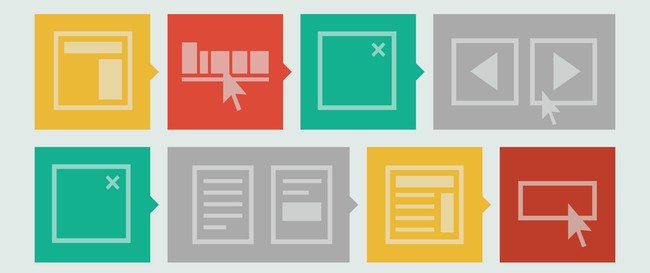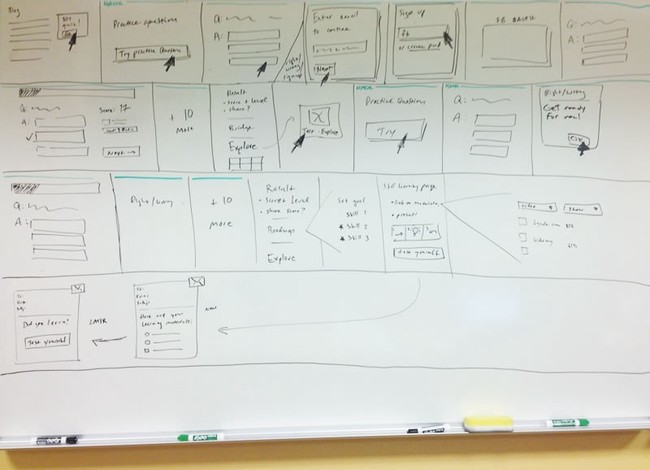Story-Centered Design
The new GV rebrand got me reading past articles from their Library. I revisited “Why good storytelling helps you design great products” written by design partner Braden Kowitz.
He argues that designs shouldn’t be presented as blueprints, which focus immediately on how an interface might look, but rather should focus on the how the product works and how a user interacts with it from start to finish.
One could argue this is easier to do today with tools like Sketch that uses multiple artboards to show a flow and with the advent of prototyping tools that better present how a user might go through a product’s flow.
However, he points out that an extra layer of granularity during the low-fidelity process is beneficial. And only once it crafts the story of how a user interacts with the product can they focus on the details of each screen:
In story-centered design, teams critique work by looking at dozens of sequential mockups that function like frames in a filmstrip (see the photo below). Designers present every sentence the customer reads, every action they take, and every screen that system generates in response. The designs follow a customer from an initial trigger all the way through completing a goal, and they show how the design supports every step in that flow.
Below is an actual example of this process:
Note that it’s extremely low-fi, but the focus is on how a user might interact with it, including critical (but not final) pieces of copy, and where they can tap or click, and what might happen in each scenario.
Braden Kowitz has three main arguments as to why this is a better design process than simply jumping into high-fidelity mockups:
- It stimulates the user experience.
- Teams spot problems earlier.
- It clarifies design goals upfront.
- It’s science! (Behavior changes through the convergence of motivation, ability, and triggers.)
- It speeds up everything else.
As a fan of first principles, I really like this process because it forces designers to prioritize the user and not whatever design artifact comes out at the end.
Product design is a unique discipline because everything we do requires thinking about how the things we build serve the person interacting with it, and do so in a way that lets them accomplish what they came for seamlessly, and even enjoyably.
And I believe focusing on the overall story, on how a user might interact with the product and what they are thinking throughout every step of the process facilitates this better and more thoughtfully. It’s a methodology I hope to always implement in my own work.

